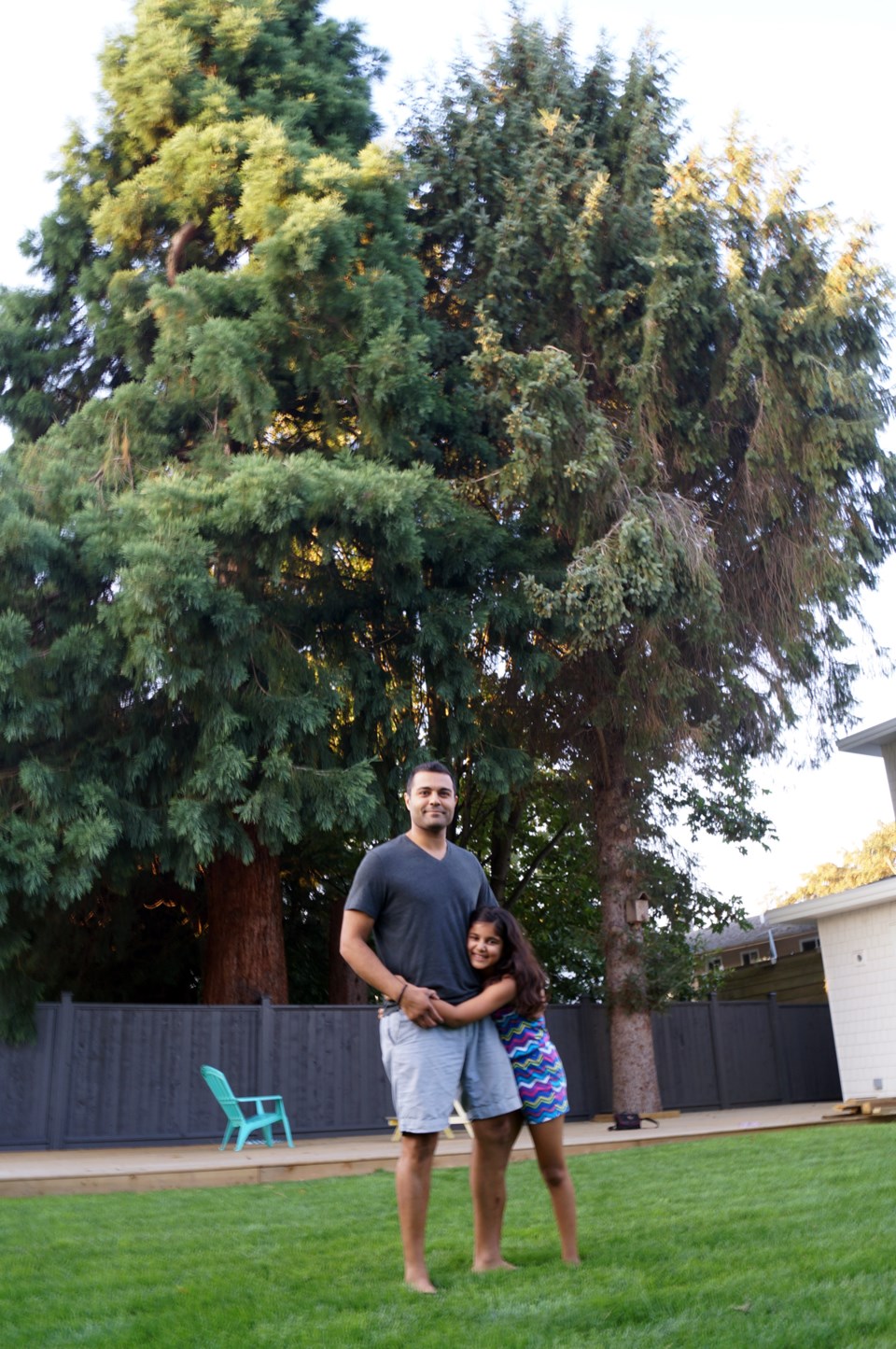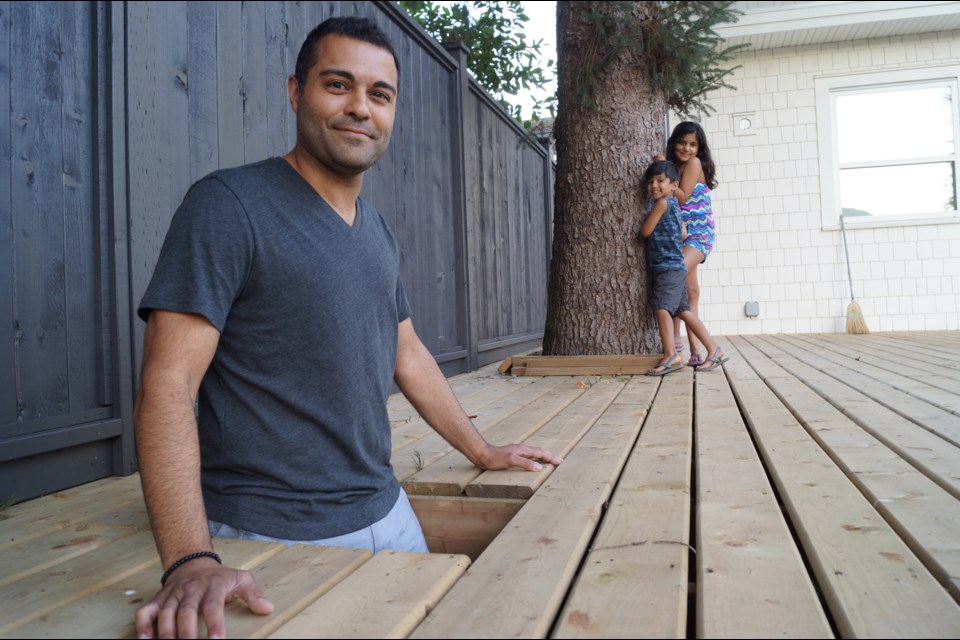When developer Rocky Sethi read a Richmond News story last week about a criminal investigation surrounding the intentional destruction of a sequoia tree on Gibbons Drive, his reaction was not unlike most others. He was saddened and frustrated.
The careless attitude some builders and property owners have taken toward tree protection and the subsequent thinning of tree canopies in Richmond’s neighbourhoods need not happen, according to Sethi, a 39-year-old homebuilder, turned director of development for a regional development firm.
Furthermore, Sethi said with so few City of Richmond staff designated to tree protection during an unprecedented rate of redevelopment of homes in Richmond, he isn’t convinced the problem will solve itself.
The father-of-two recently built his family home on No. 2 Road, north of Moncton Street and took extra measures not only to protect a 70-foot spruce tree on his own lot, but an 80-foot sequoia in his backyard neighbour’s property.
Sethi spent an estimated $10,000 to build an elevated deck beneath the two large trees, allowing their roots to continue to absorb water at ground level.
“Sure it’s a pain in the ass to deal with trees. But if you do it and you put some thought into it, you can end up with something like this. As opposed to being a hindrance to the backyard, it’s actually fantastic, and it adds to the quality of the backyard,” said Sethi.
Because of a mandatory flood protection bylaw, Sethi’s new home had to be raised to 30 cm above the crest of No. 2 Road. Each time a home is demolished, a municipal tree preservation officer and certified arborist must examine the new home’s design. If a tree is found to be in the way of a new footprint, it can be knocked down. But if a home’s footprint doesn’t come into conflict with a mature tree, the tree must be saved.
Generally, to save a tree, its canopy must be protected and no dirt or infill must be placed beneath it (to allow water to reach its roots), thus leaving a cavity on raised lots.
So, Sethi maintained the ground beneath his trees’ canopies but built his 600-square-foot deck about one metre above the ground level, to match his new lawn, thus creating a levelled backyard. The small support beams rest on top of the ground and an arborist-approved permeable mesh to prevent weed growth has been laid underneath. The trees now provide shade in the summer and his children enjoy watching the birds and squirrels that live in them.

Sethi said the effort he took to protect his trees and create a livable backyard space for his family is often not being undertaken elsewhere, particularly with homes built to sell.
He’s concerned that the City of Richmond is understaffed to follow through on its guidelines for tree protection.
“They don’t have enough staff. They don’t even have enough planning staff to manage permits and other developments. Managing retention of trees is well down on their priority list, as much as they can say so. They do have three people in their tree preservation department, but they’ve got to manage a whole host of other things.”
Richmond is on pace to see more home demolitions than ever, in one year. Last year, a record 512 homes came down. This year, to June 30, the city issued 286 home demolition permits, each requiring its own set of paperwork to ensure guidelines are followed.
“I have a vested interest in Richmond,” said McNair graduate Sethi. “It’s my backyard. Also, I like to see things done right. Right now, things aren’t being done right; they’re being done 100 different ways and people are trying to circumvent the process. It ends up being unfair for a lot of different people.”
For example, a nearby development saw one corner-lot house demolished and four houses built on the property. All but one mature tree was saved.
“They could have just as easily given them three lots,” said Sethi.
Then there’s the issue of knocking down trees before a building permit is sent to city hall.
Some builders “fly under the radar” as homeowners, because once a permit is sent in, the city begins to scrutinize the lot, said Sethi, noting the building industry has lost its attention to detail over the past decade or so (a trend he hopes will be reversed with new provincial regulations and standards for “owner-builders,” introduced last month).
Another concern is the care and attention that will be taken when his neighbour’s old house is demolished. What measures will the next developers take to protect the spruce and sequoia? Sethi wonders.
Sethi said he is mindful of the flood protection bylaw and acknowledges new trees will eventually grow to replace the ones that are knocked down. For instance, he cut down several mature evergreens in the front yard, but has replaced them with three deciduous saplings that should, one day, be taller than his 30-foot-high home. He also planted two additional trees at his backyard fence.



